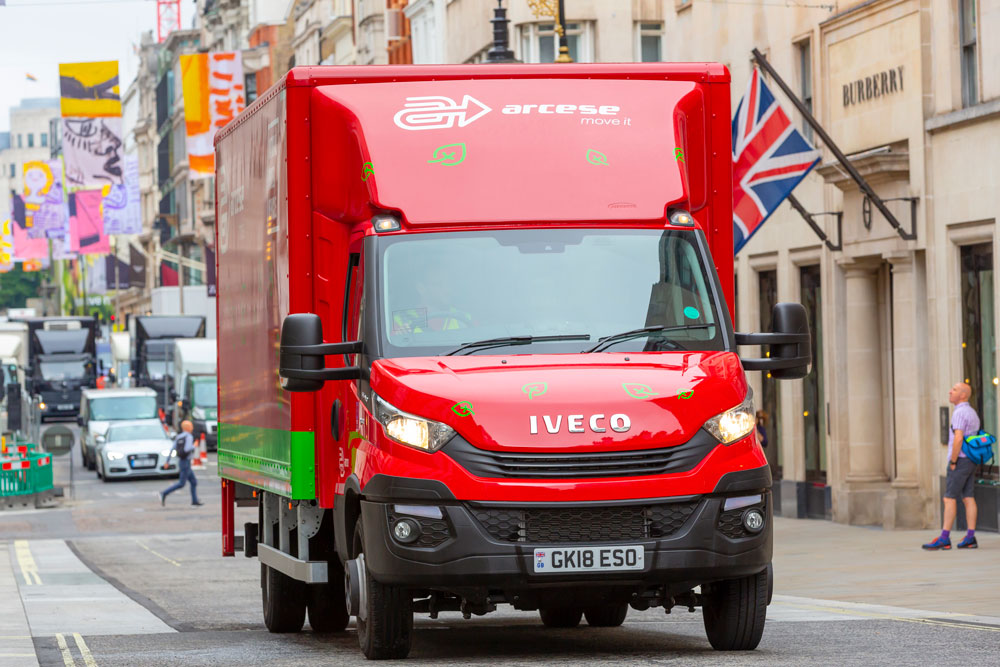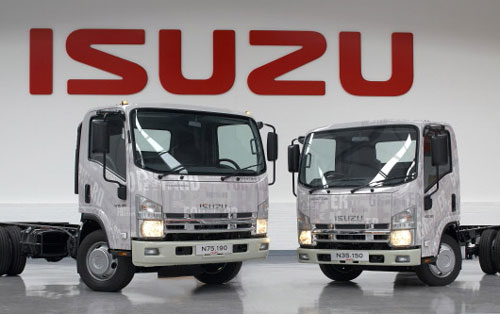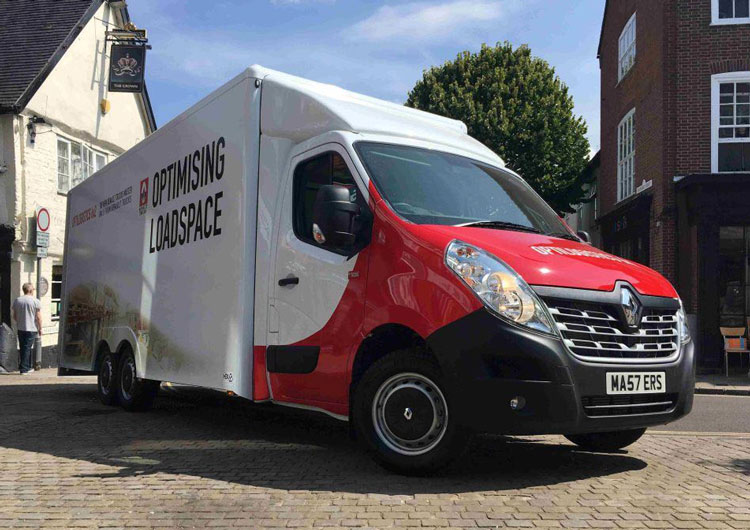
The vehicle landscape is changing in many different ways, not least the size of vehicles that operators are choosing for their fleets. Steve Banner investigates the growing 7.5-tonne segment
Run a 3.5-tonner and you may eventually conclude that it has insufficient payload capacity to meet your needs; especially if your business is expanding. Firms in that position have often opted to step up to a 7.5-tonner, even though this involves having to get to grips with O licensing, drivers hours and a far tougher regulatory climate overall.
But which model should you pick? Sometimes derived from heavier trucks, traditionally-engineered European 7.5-tonners may not deliver enough of a payload boost. Opt for lighter but nonetheless robust models with a Far Eastern heritage such as those from Isuzu and Fuso however and you should be able to haul twice or even three times as much as you can with a 3.5-tonner.
Isuzu’s N75.150(E) Dropside 7.5-tonner is a case in point. Powered by a 150bhp 3-litre diesel married to a six-speed Easyshift automated gearbox and fitted with an aluminium body, it offers a healthy 4,100kg payload allowance. Employing the same powertrain, the N75.150(E) Tipper boasts a payload allowance of almost 3,700kg – more than three times the amount that a 3.5-tonner tipper can lug around.
Fuso’s Canter offers much the same level of capability, and a business that is taking advantage of the fact is Evans European Transport. Earlier this year the Grimsby-based company put a 7.5-tonne refrigerated Canter 7C18D into service complete with a sleeper cab based on Canter’s four-door crew cab. Constructed by Gray & Adams, the 5m single compartment insulated body is fitted with a GAH EX700 fridge unit.
“We’ve been able to achieve our target payload of 3.0 tonnes with ease,” says Colin Evans. “That’s around a tonne more than most other manufacturers could offer on a 7.5-tonne sleeper.”
We’ve been able to achieve our target payload of 3.0 tonnes with ease. That’s around a tonne more than most other manufacturers could offer on a 7.5-tonne sleeper
Creature comforts
The regular driver typically spends three nights a week on the road, transporting food products between manufacturing plants and supermarket distribution centres spread from Scotland to the south-west of England. As such, the crew cab was converted into a sleeper by Hatcher Components. It replaced the second row of seats with a full-size bed.
Not that there is any need to march all the way up to 7.5 tonnes to gain a valuable payload advantage. A number of manufacturers – Isuzu and Fuso included – offer models that occupy the 3.5-to-7.5- tonnes gross weight band.
While Iveco offers Eurocargo at 7.5 tonnes, it also produces a Daily 7.2-tonne chassis with much the same capability; and it delivers this capability at a lower cost and with less fuel consumption.
Take a Daily E6 72C21 with a 5.1m wheelbase for instance and have it fitted with a curtain sider body and you have immediately won yourself 38cu m of cargo space. That is more than twice the load volume that even the biggest factory-built 3.5-tonne panel van can provide.
When equipped with a 205PS 3-litre diesel married to an eight-speed Hi-Matic fully-automatic gearbox it can transport getting on for 3,600kg. That is almost two-and-a-half times the weight that can be carried in a 3.5-tonner and not far off the amount that even the most-anorexic 7.5-tonner can deal with; despite the fact that the Daily is 300kg lighter.

The Isuzu Grafter offers a healthy 4,100kg payload allowance
So as far as fuel economy is concerned, the 7.2-tonner should consume approximately 24mpg to 25mpg on average; 7mpg to 8mpg better than a 7.5-tonner is likely to deliver. Your CO2 footprint will shrink accordingly.
Because the 7.2-tonner is a big conventionally laid- out light commercial rather than a small forward control truck, the driver sits behind rather than above the engine. As a consequence the driving position is lower, which gives whoever is behind the wheel more of a chance of direct eye contact with cyclists and other vulnerable road users.
Covering the middle ground
Manufacturers with products that gross at between 3.5 and 7.5 tonnes are not ignoring alternative modes of propulsion. Fuso has developed the electric eCanter while Iveco has come up with both electric and gas powered versions of Daily.
International logistics group Arcese has taken delivery of a 6.5-tonne compressed natural gas Daily which is being used to deliver garments to upmarket retailers in London. It is fitted with a box body built by Kira equipped with hanging rails. Power comes courtesy of a 3.0-litre spark ignition engine producing 136PS.
Renault Trucks has recently launched a 6×2 version of Master grossing at six tonnes. Finding three axles on a vehicle of this size is not unknown, but a little unusual; and it is a package that seems to work. Able to hand a three-tonne-plus payload, the conversion is based on the front-wheel-drive Master variant which spells a low loading height. It can be ordered with four-bag rear air suspension. A cargo body has been developed in conjunction with bodybuilder P D Stevens of Market Drayton, Shropshire. Power comes courtesy of a 2.3-litre 165PS diesel married to a six-speed manual gearbox.
Fuel consumption is more than 30% lower than that of a traditional box-bodied 7.5-tonner contends Renault Trucks UK head of light commercial vehicles, Grahame Neagus. “In a world that is focused on productivity, fuel efficiency and environmental impact, it gives us a strong and unique proposition across a number of industry sectors,” he observes. Of the first two to be sold, one is being operated by a home delivery company. The other is a horse box.
In a world that is focused on productivity, fuel efficiency and environmental impact, it gives us a strong and unique proposition across a number of sectors
Try a tri-axle
Another tri-axle that is worth investigating is the Aduro XL from Leicester bodybuilder Doyles. Grossing at five tonnes, and with a 30m3 body, it can take on payloads of up to 2.2 tonnes. With a 600mm loading height, the thermoplastic composite body is supported by an aluminium framework and Aduro XL employs Fiat Professional Ducato running gear. Claimed fuel consumption is up to 29mpg.
Aduro XL is just one model among a wide variety of big-cargo-volume, low-loading-height vehicles the company produces, with 3.5-tonners well to the fore. Doyles makes the point that the lower a body sits, the less risk there is of injury from a fall from height: and falls from height in the workplace have long been a focus of the Health & Safety Executive.
A low load bed height should mean that deliveries can be made more rapidly and the driver can get in and out of the cab more quickly than is possible with most 7.5-tonners because it sits lower. That is a definite plus-point if the vehicle is on multi-drop work. What’s more, because vehicles such as Daily are in effect overgrown vans, they have softer and less-threatening front profiles than a 7.5-tonner. That makes them more acceptable to the local population when delivering around suburban housing estates.

The new Renault Master 6×2 has a GVW of six tonnes and up to 30% more economical than a 7.5-tonne boxbodied truck
Truck manufacturers such as Iveco and Renault and their dealer networks understand vehicles grossing at above 3.5 tonnes. It is their job to do so. By contrast, while many car and van manufacturers offer versions of their 3.5-tonne products grossing at heavier weights, in some cases, they have no real grasp of the regulations that govern them, and little understanding of the implications of moving up to, say, a 4.2- or 4.5-tonner.
As a consequence, their registrations above 3.5 tonnes tend to be modest.
Perhaps they should try to improve their knowledge. If 3.5-tonne payloads continue to be squeezed, then more and more operators may conclude that they have no choice but to move up to something beefier: and they will gravitate towards dealers who can provide them with the best advice.


